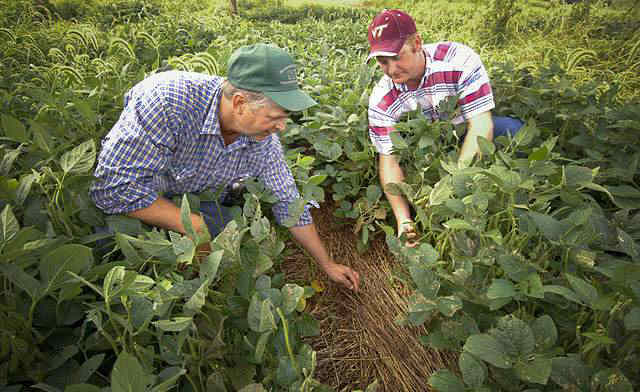With no-till agriculture, farmers avoid disturbing the soil through tilling or plowing. In other words, the roots and stems of the previous crop are left in place to decay which helps to add organic matter to the soil.
While turning the soil can allow water and oxygen to more easily reach the part of the soil where roots grow, tilling can also harm soil quality by creating a layer of loosened soil (which will easily compact again under rainfall) over a deeper layer of compacted soil where the roots need to grow. Tilling can also lead to the loss of valuable organic matter, soil erosion from water or wind, and, according to the U.S. Department of Agriculture (USDA), the accelerated loss of carbon dioxide.
Meanwhile, no-till has a number of benefits. First, cutting back on tilling reduces costs associated with labor, machinery, and the need for fossil fuels (for mechanical tilling). Untilled soil has a decreased potential for erosion since the plant matter which is left on the surface of the field impedes soil erosion caused by wind and rain. No-till can increase the ability of water to penetrate the soil as well as to increase water retention because as the roots decay in place, they leave behind channels which allow for better water and air penetration. Crop residue left on the surface is still able to decay and the resulting nutrients still leach into the soil below.
No-till can help increase the amount of organic matter in soil, which helps to increase net primary productivity and yields, which “are generally at least as good with no-till agriculture as they are with plow techniques.” In fact, according to the U.N. Environment Program (UNEP), no-till also can have significant climate change adaptation benefits. For example, Kazakhstan’s 2012 overall wheat yields were relatively low due to drought and high temperatures, but wheat grown under no-till practices produced yields three times higher than those yields produced with tilling.
With no-till, there are challenges in order to ensure sufficient production. On tilled fields, weeds are tilled back into the soil, but on un-tilled fields, weeds grow more easily. This means that herbicides may be needed to control weed growth, but many farmers have successfully used cover crops to keep weeds down. Alternatively, weeds can be controlled by hand but this can be an inefficient use of labor.
In the U.S, no-till is slowly increasing in use among farmers; according to the U.S. Department of Agriculture, it is growing at the pace of 1.5 percent per year. As of 2009, no-till was practiced on at least some portion of approximately 35.5 percent of farms in the U.S.
In many countries, farmers are being monetarily rewarded for practicing no-till, due to its potential contribution towards the fight against climate change. Many soil scientist and agronomists claim that no-till is an effective form of carbon sequestration. Since plant matter decays more slowly on un-tilled fields, the amount of carbon stored in the field increases. According to UNEP, the U.S. has avoided 241 million metric tons of carbon dioxide emissions since the 1970s due to the use of no-till practices. With the continued adoption of no-till agriculture, there is great potential to counter carbon dioxide emissions and climate change.













